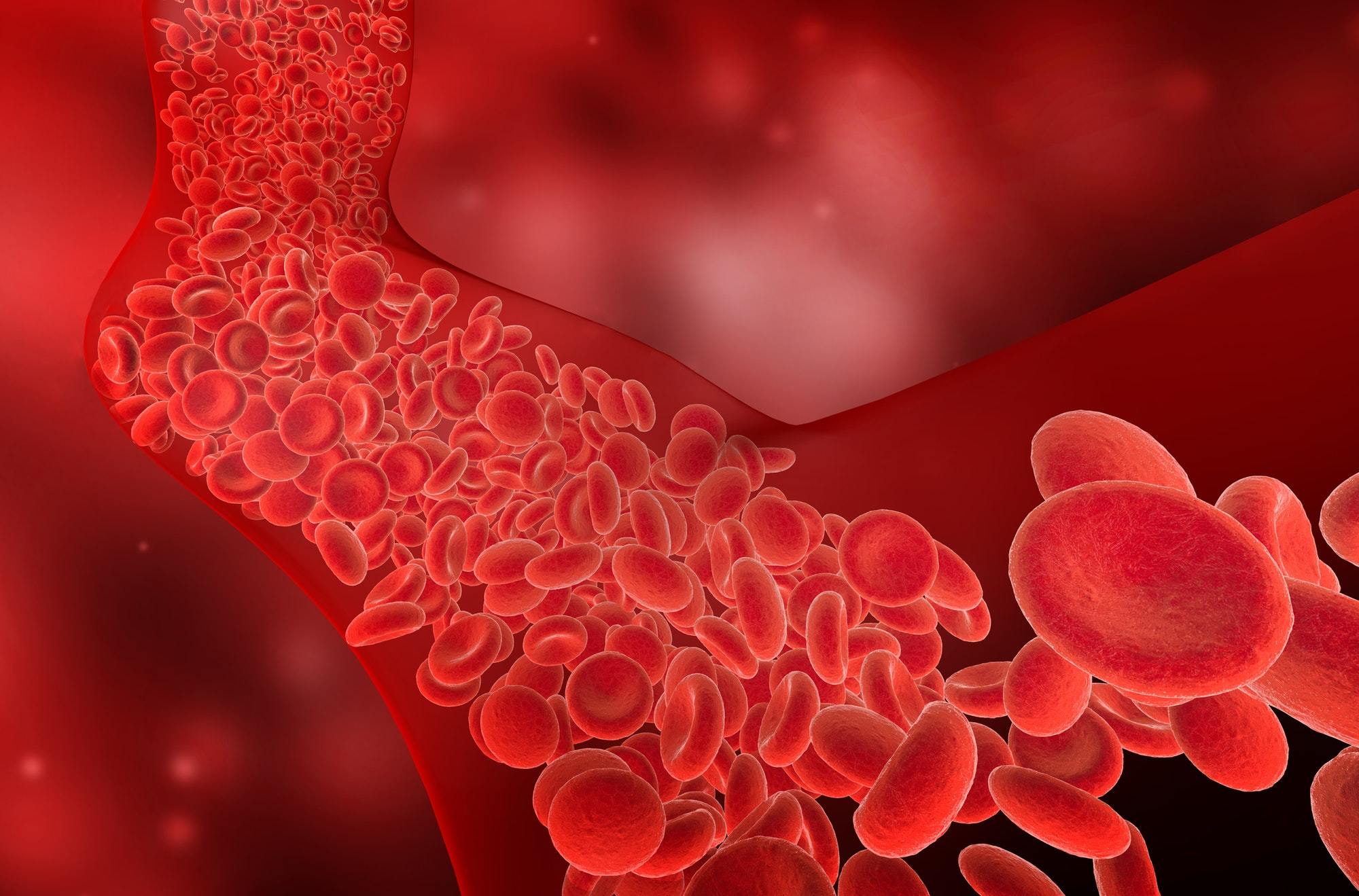Having good blood circulation is necessary for your body to get oxygen and nutrients to your cells and to remove waste. Poor circulation can lead to health problems – from a numbness or pain in the limbs to heart attack and stroke. Fortunately, there are many simple ways you can fix poor circulation.
Causes
- Low blood pressure is measured as anything less than 90/60 (systolic over diastolic). It can also cause you to feel lightheaded, dizzy, and tired.
- Peripheral artery disease (PAD): this is a circulatory condition that causes the blood vessels and arteries to narrow, limiting blood flow.
- Arthrosclerosis: Plaque build-up in arteries and blood vessels that cause arteries to stiffen
- Blood clots: buildup of plaque in blood vessels, veins, and arteries
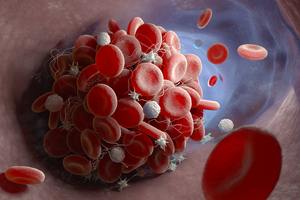
- Varicose veins: enlarged veins caused by valve failure; they appear gnarled and enlarged and are usually found on the back of the legs
- Diabetes: diabetes can cause poor circulation as well as cramping in legs and pain in calves, thighs, and buttocks; those with diabetes can have a hard time detecting poor circulation because diabetic neuropathy causes reduced sensation in the limbs.
- Obesity: the extra burden of weight can lead to poor circulation. It also increases the risk of other problems that cause poor circulation like varicose veins and blood vessel problems.
- Reynaud’s disease: this is a condition that causes the small arteries in hands and feet to narrow. Because of the lack of blood flow to these areas, people with Reynaud’s disease often have chronic cold hands and feet.
[1] [2] [3]
Symptoms
- Lightheadedness or dizziness
- Poor circulation and throbbing or pain in legs
- Numbness
- Tingling
- Muscle cramps
- Erectile dysfunction in men
[1] [2] [3]
Risks
- Nerve damage
- Tissue damage
- Reduced flow and plaque buildup can cause a heart attack or stroke
How to Fix Poor Circulation (and Avoid It)
There are many simple ways you can address poor circulation. These include physical exercises to do, foods to eat and avoid, hygiene tips, and even clothes to wear. Never hesitate to reach out to a health care profession to discuss what is best for you.
Physical Exercise
Get your blood pumping with cardio exercises like speed walking, jogging, running, or swimming. These aerobic exercises are great for moving your blood through your body. Getting 30 minutes of activity 5 – 7 days a week will greatly improve your circulation. [1] [2] [4]
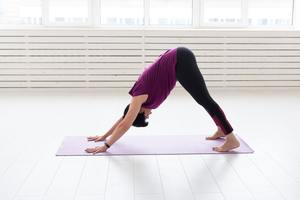
Yoga is another practice that is great for your cardiovascular health. Bending and twisting will cause blood to flow; upside-down positions (like downward facing dog) are great for getting blood to your heart and brain. Here’s a link to get you started! [2] [5]
Propping your feet up isn’t just for relaxation. The classic, feet-on-wall position is an easy way to get blood to your upper body. Simply lie down with your buttocks close to the wall and straighten your legs above you, resting your feet against the wall. Spread your arms out on the floor beside you with the palms down for balance. [1]
Doing squats is another quick way to get your blood moving. It specifically helps circulation in your legs. With your feet hip-width apart and your back straight, squat down as if you were going to sit on a chair. Be sure your knees do not extend past your feet. Do 3 sets of 10-15 repetitions. [1]
Avoid sitting for long periods. If you have a desk job, consider getting a standing desk or take frequent breaks to stand up, walk around, or go up and down the stairs. [1] [2]
Diet

Filling you diet with fresh fruits and vegetables is always a good idea. A healthy diet will help you maintain a healthy weight, get the nutrients you need to keep your energy up, and help you avoid other causes of poor circulation. [1] [2]
Stay hydrated. Getting plenty of fluids will help your circulation. Aim to drink at least 8 glasses of water a day (or more if you are exercising or it is hot outside). [1]
Oily fish like salmon, sardines, tuna, and mackerel can help your blood flow. This is because they are rich in omega-3s. This nutrient promotes cardiovascular health and improves circulation. For vegetarians and vegans, kale can also be a source of omega-3 (though it doesn’t contain as much). It can also be taken as a supplement. [2]
Tea (black or green) contains polyphenolic antioxidants that improve cardiovascular health. Studies have shown the association between tea consumption and lower risk of coronary artery disease. Drinking hot water also has a temporary effect of opening your veins at arteries a bit. This can just hot water or you can make it tastier with your favorite tea. [6] [7]
Cutting down on salt in your diet will lower your blood pressure. The recommended daily intake for adults is 1,500 mg (and no more than 2,300). Avoid processed foods and adding extra salt to your meals. [1]
Reduce your saturated fat intake. This will avoid buildup in veins and arteries, help you maintain a healthy weight, and avoid other causes of poor blood circulation. [1]
Having balanced iron levels is important for blood flow. Iron is required to make hemoglobin, which is a major component in red blood cells. Iron is found in red meat, spinach, and can be taken as a supplement. You don’t need very much per day – just 1 mg for adult males and 1.5 for menstruating females. But do make sure you still get it! [2]
[L-arginine plug]
Hygiene and Wardrobe
It’s not just what goes on inside your body that affects your circulation, but what goes on outside that can have an impact. These are some hygiene and even wardrobe choices that can help your circulation.
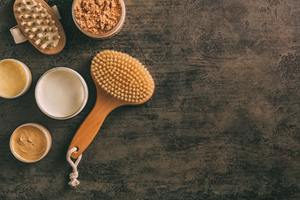
Brushing your body might sound strange, but it can be an effective way to get your blood moving. Use a shower brush with stiff, flat bristle to make big sweeping strokes across your skin. Start at your feet and brush in an upward direction on your legs. Use circular motions on your back and abdomen. It’s also a great way to exfoliate dry skin! Brush your body once a day before or after you take a shower. (Skin must be dry to get the full benefits!) [1] [8]
Soaking in a warm bath can help your blood circulate. This is because (like drinking hot water) being in hot water will open your veins and arteries. However, this is a more temporary fix. But if a temporary boost is what you need, then a hot bath might do the trick. [1]
Compression socks come highly recommended for improving circulation, especially in the legs. They work by squeezing your legs, sending blood in your legs up to your heart. You can talk to your doctor what length of sock and amount of pressure is right for you. [1]
Habits and Behavior
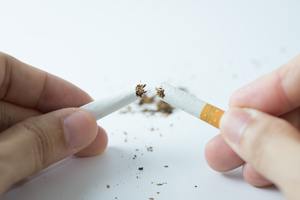
Quit smoking. The facts are in: tobacco harms artery walls and thickens your blood. Nicotine also raises your blood pressure. Smoking is not great for circulation or heart health. If you are currently smoking and want to quit, here’s a guide to get you started: [LINK]
Maintain a Healthy Weight. Excess weight puts more pressure on your cardiovascular system and can lead to other factors of poor circulation, like varicose veins. By sticking to the guidelines on diet and exercise mentioned above, you can work to maintain a healthy weight. [1] [2]
One study showed how losing weight improved blood circulation for over-weight women. Participants saw a rise in levels of a protein called adiponectin, which is important in vascular function. [9]
The Bottom Line
The bottom line is that there are a lot of factors that can affect your cardiovascular health. But by staying physically active, eating a healthy diet, and taking care of your body, you will be taking care of your blood circulation as well. These ideas can get you started, but always feel free to consult with your doctor about how to fix poor circulation.
Resources
- https://www.webmd.com/dvt/ss/slideshow-dvt-improve-circulation
- https://www.medicalnewstoday.com/articles/320793.php
- https://www.healthline.com/health/poor-circulation-symptoms-causes
- https://www.sciencedirect.com/science/article/abs/pii/S0002870310004916
- https://journals.sagepub.com/doi/abs/10.1177/2047487314562741
- https://www.ahajournals.org/doi/full/10.1161/01.CIR.104.2.151
- https://www.ncbi.nlm.nih.gov/pubmed/15226633
- https://health.clevelandclinic.org/the-truth-about-dry-brushing-and-what-it-does-for-you/
- https://www.ncbi.nlm.nih.gov/pubmed/18378021

